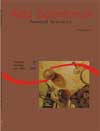<b>Forage potential of sugarcane varieties for ruminant feeding</b> - DOI: 10.4025/actascianimsci.v31i1.498
Keywords:
animal nutrition, fiber, tropical grassland, Saccharum officinarum
Abstract
There is currently great interest in sugarcane utilization during dry weather periods due to its capacity of high carbohydrate production and because it can be stored naturally with little loss in nutritional value. Thus, an experiment was performed in the experimental Station of Barra do Choça and in the Itapetinga of UESB campus, to identify the potential of different sugarcane varieties for animal feeding. Twenty-three sugarcane varieties were harvested 16 months after planting, and evaluated using a completely randomized complete block design with two repetitions. Agronomic and bromatological characteristics were estimated. Diversity was verified among the varieties for the studied characteristics. The levels of ashes, ether extract and crude protein found were low, which evidenced the need for supplementation in sugarcane-based diets. The RB76-5418, CB47-355, CP-5122 and SP80-2015 sugarcane varieties presented potential for continuing animals studies due to the larger equilibrium between the agronomic and bromatological characteristics that can improve animal performance.Downloads
Download data is not yet available.
Published
2009-05-22
How to Cite
Bonomo, P., Cardoso, C. M. M., Pedreira, M. dos S., Santos, C. C., Pires, A. J. V., & Silva, F. F. da. (2009). <b>Forage potential of sugarcane varieties for ruminant feeding</b> - DOI: 10.4025/actascianimsci.v31i1.498. Acta Scientiarum. Animal Sciences, 31(1), 53-59. https://doi.org/10.4025/actascianimsci.v31i1.498
Issue
Section
Ruminant Nutrition
DECLARATION OF ORIGINALITY AND COPYRIGHTS
- I Declare that current article is original and has not been submitted for publication, in part or in whole, to any other national or international journal.
The copyrights belong exclusively to the authors. Published content is licensed under Creative Commons Attribution 4.0 (CC BY 4.0) guidelines, which allows sharing (copy and distribution of the material in any medium or format) and adaptation (remix, transform, and build upon the material) for any purpose, even commercially, under the terms of attribution.
Read this link for further information on how to use CC BY 4.0 properly.
0.9
2019CiteScore
29th percentile
Powered by 








































